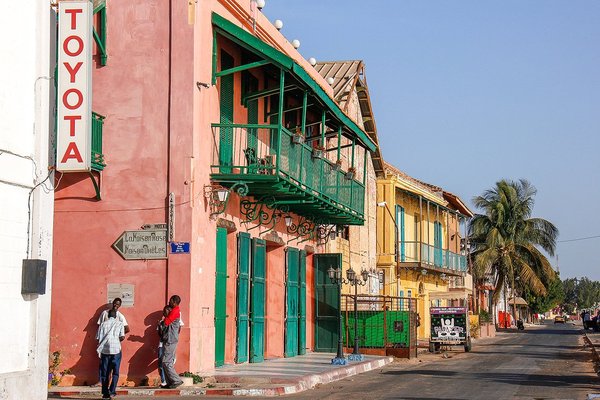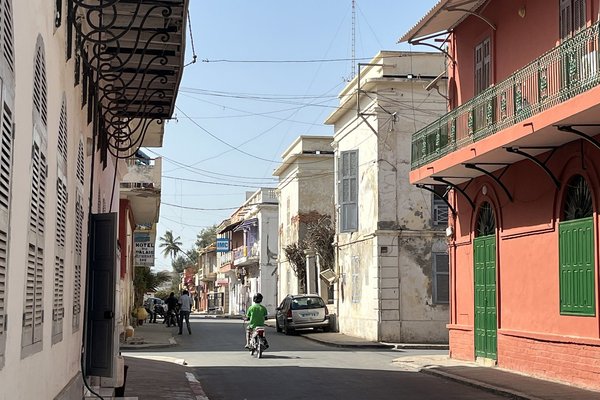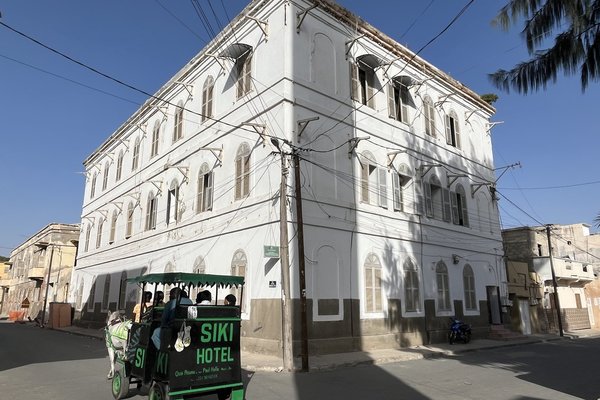Senegal
Island of Saint-Louis
The Island of Saint-Louis holds a characteristic French colonial city and oceanic port.
Saint-Louis was the capital of the French colony of Senegal from 1673 until independence in 1960. It has preserved its colonial architecture with magnificent residences and its regular town plan. The site also includes the 19th-century Faidherbe Bridge.
Community Perspective: The Island of Saint-Louis isn’t gentrified and you may encounter rubbish and poor living circumstances. Its strength lies in the homogeneity of its French colonial architecture.
Site Info
Official Information
- Full Name
- Island of Saint-Louis (ID: 956)
- Country
- Senegal
- Status
-
Inscribed 2000
Site history
History of Island of Saint-Louis
- 2000: Inscribed
- Inscribed
- Type
- Cultural
- Criteria
- ii
- iv
Links
- UNESCO
- whc.unesco.org
- Official
-
- saintlouisdusenegal.com — Saint Louis du Senegal
All Links
UNESCO.org
- whc.unesco.org — whc.unesco.org/
Official Website
- saintlouisdusenegal.com — Saint Louis du Senegal
Community Information
- Community Category
- Urban landscape: Colonial
Travel Information
Recent Connections
-
Perfect Inscriptions
2000 -
Seven Years' War
The British capture of Senegal took pla… -
Sahel
"Part of the Sahel, a transitional dese…
Connections of Island of Saint-Louis
- Individual People
-
-
Louis XIV
Named after him
-
- Geography
-
-
Sahel
"Part of the Sahel, a transitional desertic band that separates "[...] the dunes of the Sahara from the baobabs of the savanna",[7] Saint-Louis' landscape is characterized by occasional acacias and is disturbed by sand storms during the dry season" (wiki) -
Atlantic Ocean
"only separated from the Atlantic Ocean to its west by the Langue de Barbarie, a 300 m (980 ft) wide sand spit." (wiki)
-
- Trivia
-
-
Cultural sites taking up an entire island
-
Built or owned by French
Saint-Louis was the capital of the French colony of Senegal from 1673 until independence in 1960.
-
- History
-
-
British Military victories over France
Captured in 1758 during the Seven Year's War :- "The sudden arrival of British troops took the garrison completely by surprise. On 1 May they surrendered the fort, and the resident traders swore allegiance to the British. Not a single Briton had been killed in the taking of the settlement." Was kept by Britain under the 1763 Treaty of Paris but was lost again during the American War of Independence. -
Seven Years' War
The British capture of Senegal took place in 1758 during the Seven Years' War with France, as part of a concerted British strategy to weaken the French economy by damaging her international trade. To this end, a succession of small British military expeditions landed in Senegal and captured Gorée and Fort Saint Louis, the French slave fort located at Saint-Louis, seizing French vessels and supplies. By late 1758 the whole of the French colony on the Senegalese coast had been captured by the British (wiki)See en.wikipedia.org
-
Located in a Former Capital
It has variously been capital of Senegal, Afrique Occidentale Fran?aise (AOF) and Mauritania when that entity was regarded as being separate from AOF. -
History of Aviation
13 May 1930 – Jean Mermoz completed the first south transatlantic postal flight from Saint-Louis in Senegal to Natal, Brazil.
-
- Ecology
-
-
Lagoons
The entire settlement is situated in a magnificent lagoon formed by the two arms of the Senegal River (AB ev)
-
- Damaged
-
-
Islands threatened by inundation
"In June 2008, Alioune Badiane of the United Nations' UN-Habitat agency designated Saint-Louis as "the city most threatened by rising sea levels in the whole of Africa", citing climate change and a failed 2004 river and tidal canal project as the cause" (Wiki)See news.bbc.co.uk
-
- World Heritage Process
-
-
Perfect Inscriptions
2000
-
- Religion and Belief
-
-
Cathedrals
Cathédrale Saint Louis, 1828 Neoclassical facade -
Notable mosques
Great Mosque of the North, "constructed in 1847 by order of the colonial administration to appease the growing Muslim population."
-
- Human Activity
-
-
Museum History
"The first museum of the industry, ethnography, and history of West Africa was opened in Saint-Louis on 15 March 1864." (AB ev) -
Slavery
"Gradually the settlement of Saint-Louis developed its commercial activities, trading rubber, leather, gold, ivory, and cereals as well as dealing in slaves" (AB ev)
-
- Constructions
-
-
Notable Bridges
Pont FaidherbeSee en.wikipedia.org
-
Hospitals
Civic Hospital built in 1822 (AB ev)
-
- WHS on Other Lists
-
-
UNESCO Intangible Cultural Heritage Lists
Ceebu Jën, a culinary art of Senegal (2021): "a dish that originated in the fishing communities on the Island of Saint-Louis in Senegal"See ich.unesco.org
-
World Monuments Watch (past)
Saint-Louis Island (2008)
-
- Timeline
-
-
Built in the 19th Century
Founded in 1659 by French traders on an uninhabited island but remained little more than a fortified factory until the English departed in 1817 after a 16 year occupation, leaving it in ruins. A "plan d'urbanisation" was prepared in 1828 defining the regular street layout etc and in 1854 a new governor, Faidherbe, oversaw the completion of the ensemble with further large scale projects.
-
- WHS Names
-
-
Named after individual people
"Saint Louis (French: Saint-Louis) is named after Louis IX, a canonized 13th-century king of France.[4] Obliquely, the name also honored Louis XIV, the reigning king of France at the time of the island's settlement in 1659." (wiki)
-
News
No news.
Recent Visitors
Visitors of Island of Saint-Louis
- Alexander Barabanov
- Ali Zingstra
- A. Mehmet Haksever
- Ask Gudmundsen
- Atila Ege
- Boj
- edstar500
- Els Slots
- Eva Kisgyorgy
- Fernweh
- George Gdanski
- GerhardM
- Gernot
- Gilles
- Harry Mitsidis
- Iain Jackson
- Jarek Pokrzywnicki
- jonathanfr
- Jon Opol
- jxrocky
- Kevin247
- Krijn
- Loic Pedras
- Luis Filipe Gaspar
- Maciej Gil
- Mariam
- MMM
- Morodhi
- Nihal Ege
- palka25
- Paul Schofield
- Philipp Leu
- Pink Bunny
- Reza
- Roger Ourset
- Roman Bruehwiler
- Stanislaw Warwas
- Szabolcs Mosonyi
- Szucs Tamas
- Tevity
- Thomas Buechler
- Thomas van der Walt
- tony0001
- Westwards
- Zsuzsanna Forray
Community Reviews
Show full reviews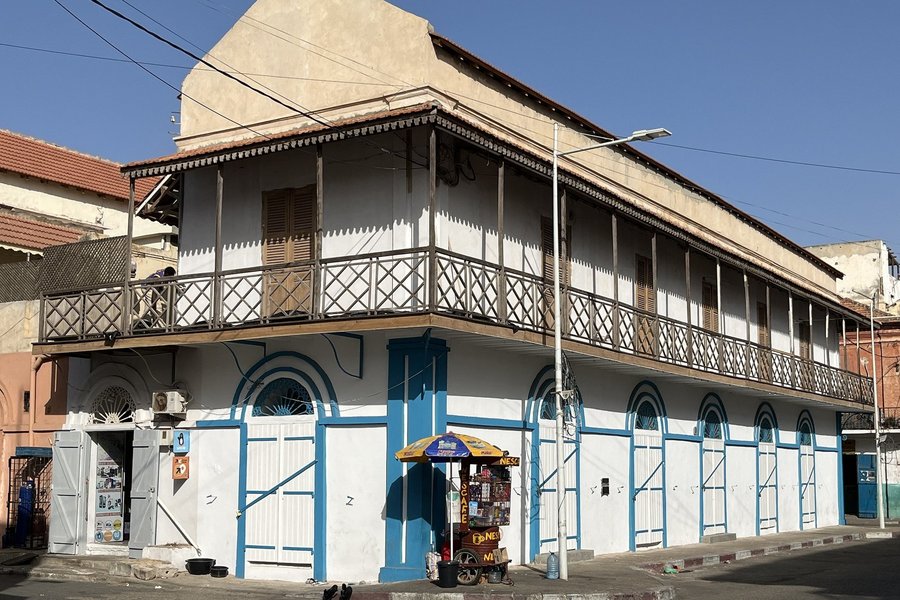
As with all of Senegal’s WHS, this one is underreviewed. So I am glad to present the situation that I encountered when visiting in January 2025. I arrived by minibus (“combi”) from Dakar’s Gare Routière des Baux Maraîchers, a 5-hour ride mostly because of strong traffic congestion one-third of the way in Thies. The bus will drop you at the bus station on the mainland of Saint-Louis, from where it’s a short taxi ride across the Faidherbe Bridge to the island. The bridge, like the rest of the colonial heritage, dates from the late 19th century so is part of the inscribed area. It looks like a horizontal Eiffel Tower.
The urban layout on the narrow strip that comprises the island follows a rigid rectangular plan. So, the best way to explore is to walk one street up and the next street down. Most notable in the architectural design of the colonial buildings are the wrought-iron balconies, wooden shutters and the use of bright colours. There’s a mosque, a church, a post office, and administrative buildings, all dating back to the heydays of Saint-Louis when it was the French colonial capital of Senegal. No building stands out though, its strength lies in its homogeneity overall. Pictured is 'Les Signares', named after the wealthy Métis (mixed race) women who formed an aristocracy within the town and held society meetings and balls in their residences.
In contrast to what Jarek found in 2018, the streets are clean and not too much rubbish …
Keep reading 0 comments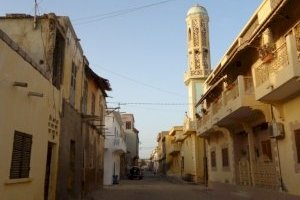
Site visited in April, 2018. Located some 300 km from Dakar to the north, close to Mauritanian border. From Dakar Gare Routiere there are mini buses (stand is located in the middle of bus station) but despite good asphalted road it took full day to reach Saint-Louis, including waiting time in Dakar (in most cases the cars leave when full, leaving hours are not specified). So when you start the journey in the morning it is possible to get to the place late in the afternoon or in the evening the same day.
While approaching Saint-Louis you will encounter huge garbage dump (some 10 km before the town). It is just for you to be prepared what you can expect in the town. And that is terrifying. Rubbish are everywhere, the streets are dirty but more appalling is what you see in the water and areas nearby (have in mind that this is an island). Of course not everywhere. Some streets in the center are more clean but overall first impression is somehow discouraging.
Historic centre of Saint-Louis is located on the island, within the estuary of Senegal river, linked with the land by Faidherbe Bridge (interesting landmark, metallic, from the end of XIX century). It has regular rectangle shape and adapted streets layout. Apart from the bridge other important places are former catholic church (closed), Grande Mosquée de Saint-Louis, Faidherbe square, post office, building of Office Du Tourisme-Syndicat D'initiative de Saint-Louis. If you forget the rubbish nice …
Keep reading 0 comments
